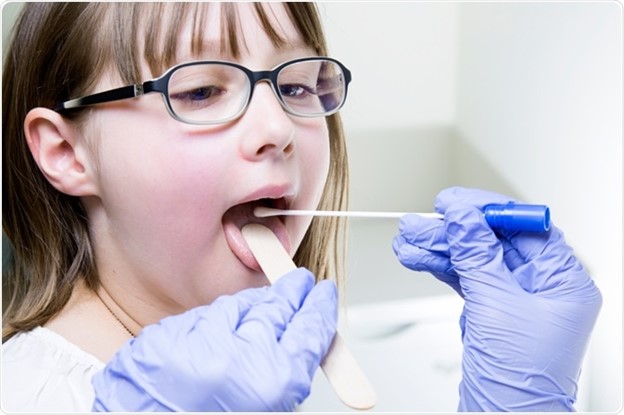Specimen Collection
1. Blood Collection
Venipuncture
- Choose an appropriate site (often the antecubital fossa) and select the correct needle size based on the child's age and size.
- Apply a topical anesthetic or use a numbing cream to reduce pain.
- Ensure the child is calm and in a comfortable position.
- Use distraction techniques (e.g., toys, videos) to divert their attention.
- Have a comfort item or a favorite toy nearby for reassurance.
- Ensure a skilled and experienced phlebotomist performs the procedure.

Heel Stick (for infants)
- Clean the heel with an alcohol swab and allow it to dry.
- Warm the heel to increase blood flow (optional).
- Use a lancet to puncture the side of the heel.
- Collect the necessary amount of blood onto a filter paper or a microcollection tube.
- Apply gentle pressure to the puncture site to stop bleeding.
2. Urine Collection
Clean-Catch Method
- Clean the genital area thoroughly with wipes or soap and water.
- Provide a sterile urine collection cup.
- Instruct the child to start urinating into the toilet and then collect the midstream portion in the cup.
- Ensure proper labeling and timely transport of the specimen to the laboratory.
Bagged Urine Collection (for infants and toddlers)
- Apply a sterile adhesive bag over the genital area.
- Monitor the child for signs of urination.
- Once urine is collected, carefully remove the bag and transfer the urine to a sterile container.
3. Stool Collection
Clean Technique
- Provide a clean, dry bedpan or diaper liner.
- Instruct the caregiver to collect a small portion of the stool using a clean spoon or a designated collection device.
- Ensure proper labeling and transfer of the specimen to a sterile container.
4. Throat Swab (for bacterial cultures):
- Use a sterile swab to gently rub the tonsils and the back of the throat.
- Be careful to avoid causing discomfort or triggering a gag reflex.
- Ensure the swab reaches areas likely to harbor pathogens.

5. Nasopharyngeal Swab (for respiratory viruses)
- Insert a flexible swab through the nostril until it reaches the posterior nasopharynx.
- Gently rotate the swab to collect a sample.
- Ensure the swab does not touch the tongue or the palate.
Nursing Test Bank
Quiz #1: RN Exams Pharmacology Exams
Quiz #2: RN Exams Medical-Surgical Exams
Quiz #3: RN Exams Fundamentals Exams
Quiz #4: RN Exams Maternal-Newborn Exams
Quiz #5: RN Exams Anatomy and Physiology Exams
Quiz #6: RN Exams Obstetrics and Pediatrics Exams
Quiz #7: RN Exams Fluid and Electrolytes Exams
Quiz #8: RN Exams Community Health Exams
Quiz #9: RN Exams Promoting Health across the lifespan Exams
Quiz #10: RN Exams Multidimensional care Exams
Naxlex Comprehensive Predictor Exams
Quiz #1: Naxlex RN Comprehensive online practice 2019 B with NGN
Quiz #2: Naxlex RN Comprehensive Predictor 2023
Quiz #3: Naxlex RN Comprehensive Predictor 2023 Exit Exam A
Quiz #4: Naxlex HESI Exit LPN Exam
Quiz #5: Naxlex PN Comprehensive Predictor PN 2020
Quiz #6: Naxlex VATI PN Comprehensive Predictor 2020
Quiz #8: Naxlex PN Comprehensive Predictor 2023 - Exam 1
Quiz #10: Naxlex HESI PN Exit exam
Quiz #11: Naxlex HESI PN EXIT Exam 2
Questions on Specimen Collection
Correct Answer is C
Explanation
Incorrect. Administering the medication as prescribed by the provider is an important step, but first, it is essential to ensure the medication is intended for the correct patient.
Correct Answer is A
Explanation
Incorrect. Administering medication intravenously is an invasive method and would only be appropriate if indicated for the specific medication and condition, not for general administration difficulties.
Correct Answer is C
Explanation
Incorrect. Administering the medication without verifying the dosage is not a safe practice and could lead to medication errors.
Correct Answer is A
Explanation
Incorrect. The taste can be significant, especially for children who may find bitter flavors unpleasant.
Incorrect. Using a spoon may be challenging for an infant and may not provide accurate dosing.
Incorrect. Crushing medication should only be done if it is safe and appropriate for the specific medication. It should not be a standard practice without provider guidance.
Incorrect. While offering a different form of medication may be an option, it should be done under the guidance of the provider and may not always be necessary.
<p>Incorrect. Administering ear drops while the child is sitting upright may not allow the drops to reach the ear canal effectively.</p>
Search Here
Related Topics
- Stages of physical, cognitive, social and emotional development from infancy to adolescence - Pediatric Nursing Skills and Pediatric Assessment
- Developmental milestones and screening tools - Pediatric Nursing Skills and Pediatric Assessment
- Factors affecting growth and development - Pediatric Nursing Skills and Pediatric Assessment
- Interventions to promote optimal development - Pediatric Nursing Skills and Pediatric Assessment
- Conclusion - Pediatric Nursing Skills and Pediatric Assessment
More on Nursing
Free Nursing Study Materials
Access to all study guides and practice questions for nursing for free.
- Free Nursing Study Trials
- Free Nursing Video tutorials
- Free Nursing Practice Tests
- Free Exam and Study Modes
- Free Nursing Revision Quizlets
